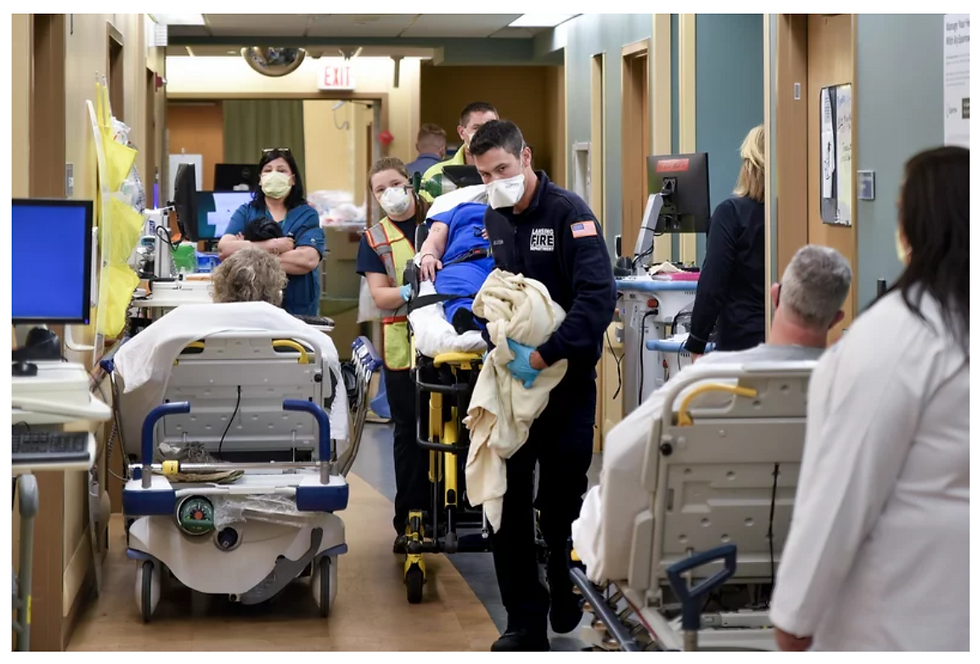Wound Care Inefficiencies in Home Health and Hospice
- Joe Ebberwein

- Mar 15, 2017
- 3 min read
Updated: Mar 30, 2021
We know that value-based care is here to stay. No matter what changes come with healthcare reform in Washington, most healthcare leaders agree that the system is not sustainable without a shift in focus to value-based outcomes, both clinical and financial.
Reimbursement rates across post-acute provider settings are probably as high as they will ever be right now. If you were part of the home health care industry in 1999 and 2000, you remember reeling from the Balanced Budget Act of 1997 and the reality of reimbursement shifting from per visit to an episodic, 60 day rate based on the OASIS assessment of the patient’s acuity. One third of the industry was not able to make the change to this model and either shut their doors or were acquired by larger agencies who had begun to reengineer their care delivery model to adapt to the reimbursement changes.
Some agencies (very few in the early days) adopted telehealth in the form of remote patient monitoring (RPM), allowing a more targeted approach for scheduling in-home visits based on the patient’s current condition (rather than the hit or miss approach of setting visit frequencies on admission). Some agencies dramatically reduced their overall SN visits per episode, while patient care actually improved along with related clinical outcomes - fewer ED visits and hospitalizations.
Fast forward 17 years and home health and hospice agencies are again faced with impending reimbursement cuts, despite as some would argue an increase in the complexity and acuity of the patient. Case in point, hospitals are sending patients home directly from the ICU rather than transferring them to a step down unit. These patients are often receiving potent IV antibiotics and have complex wounds for the agency to manage (35% of all home care patients have some type of wound). Agencies are forced to make the decision to admit these patients, often without having the expertise on staff to effectively manage these patients. This can result in a financial loss per episode or worse yet, potential liability in the form of litigation or survey deficiencies (in the new world of 5 Star Ratings).
30% of hospice patients are dealing with some type of wound; this often includes non-healing wounds that have major repercussions on patient/caregiver quality of life. Again, many hospices lack the expertise to deal effectively with these complex wounds.
One solution for dealing with these complex wound care inefficiencies includes hiring a certified wound care clinician, such as a CWOCN or CWS. But these clinicians are scarce and expensive. Does this scenario sound familiar? ABC Home Health and Hospice decides to hire a certified wound care clinician to address the increase in census of patients with wounds. The new CWOCN covers a large geography over the agency’s five branches, so the most t in-home visits the CWOCN can make is two or three. Often times the CWOCN accompanies the home care nurse on the visit for education purposes which effectively renders her time with the patient as a non-billable visit. This results in an expensive resource being very unproductive to the agency. Once the census of wound patients dips, the CWOCN is asked to help with admission or routine visits on non-wound patients which leads to frustration on the part of the CWOCN.
Another scenario includes agencies who allow their nurses to take photographs of the patient’s wound with their cell phone, email or text it to the CWOCN for her review and recommendation. We often hear that home health managers instruct their staff to snap the photo, send it to the CWOCN, and then delete the image.This solution is fraught with issues, not the least of which is the possibility of a HIPAA violation for PHI of the patient residing on the nurse’s device.It can also lead to incorrect info being evaluated by the CWOCN.
How can Corstrata help your home health agency maneuver these wound care inefficiencies?
Corstrata utilizes mobile technologies to create access to its board-certified wound care specialists to produce a return on investment for our customers. Corstrata assists providers in the proper assessment of wounds during the completion of the OASIS C2. Additionally, we collaborate with providers to develop a wound program that includes evidence-based, best practice wound treatments, staff education, pressure ulcer prevention program, and wound formulary redesign. Corstrata provides wound image and video consults that include accurate identification of the wound type and associated staging, precise wound measurement, and recommended treatment and wound dressing.
Contact us today for Expert Wound Care. Anywhere.





Comments